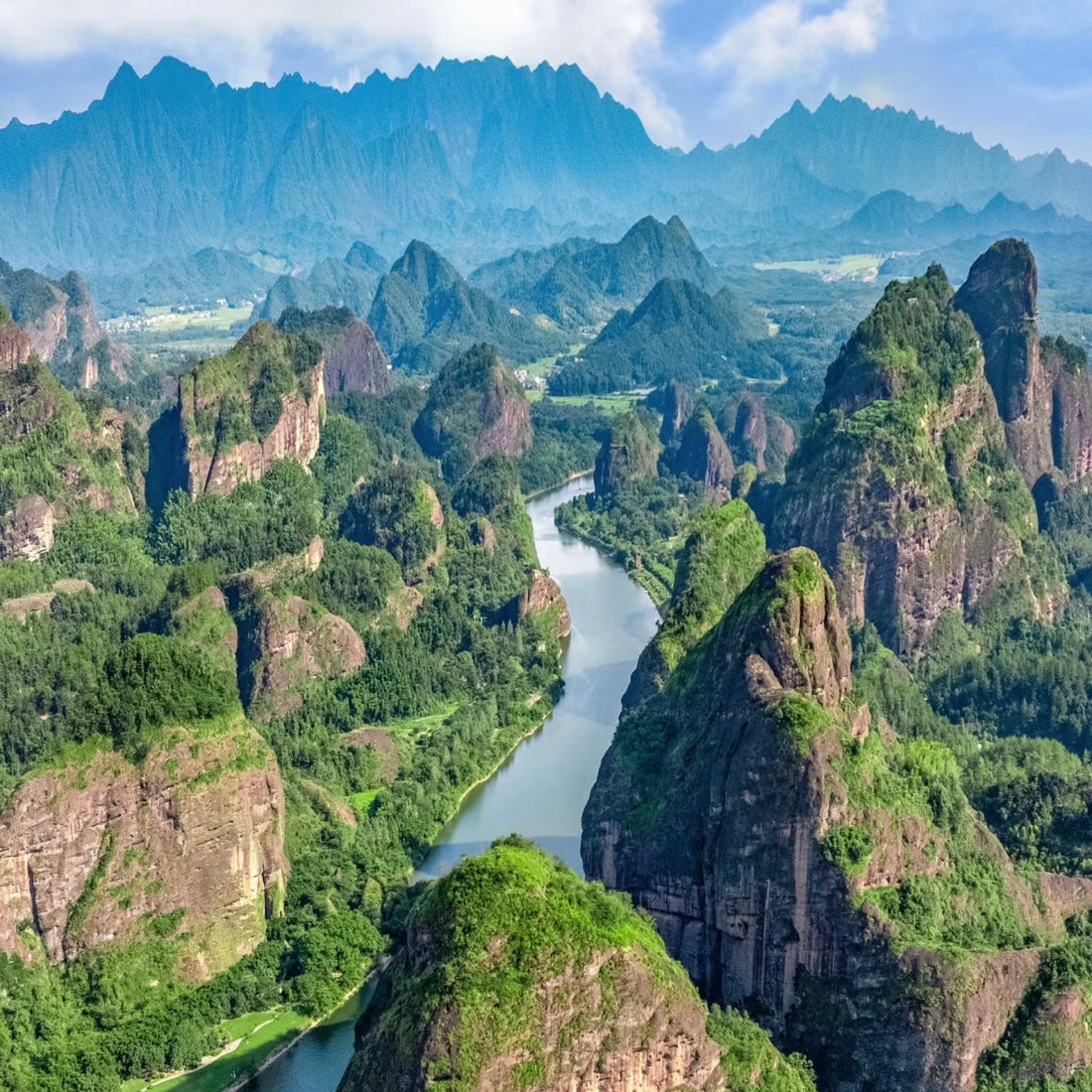
Longhu Mountain and Taoist Heritage: Cultural Origins and Lasting Influence
Share
Longhu Mountain (龙虎山), located in Jiangxi Province, is more than a scenic wonder—it’s the cradle of Zhengyi Taoism, also known as the Way of Orthodox Unity. With its sacred caves, mysterious cliff tombs, and centuries-old rituals, Longhu Mountain has stood as a spiritual and cultural epicenter for Chinese Taoist practices.
1. The Birthplace of Zhengyi Taoism
Longhu Mountain is widely recognized as the ancestral home of Zhengyi Dao (正一道), a major school within Taoism. According to historical records such as the Zhengtong Daozang (正统道藏), Zhang Daoling (张道陵) received the Taoist teachings here during the Eastern Han Dynasty and became the first Celestial Master (天师).
The mountain’s name—“Dragon-Tiger Mountain”—symbolizes the dual forces of yin (tiger) and yang (dragon), which are central to Taoist cosmology. This spiritual geography underscores Taoism’s emphasis on natural harmony and symbolic power.
2. Cultural Significance and Sacred Sites
· Cliff Tombs and Immortal Caves: Longhu Mountain’s ancient cliff tombs, some over 2,000 years old, represent early Taoist beliefs in immortality. The famous “Celestial Master Cave” (天师洞) is a pilgrimage destination for Taoist practitioners.
· Zhengyi Temple and Ritual Grounds: Temples at Longhu Mountain still perform traditional rituals such as talisman burning, incense offering, and Taoist chanting.
· Celestial Master’s Mansion (天师府): Home to generations of Taoist Celestial Masters, it functions as a ceremonial center and cultural museum.
3. Taoist Ornament Symbolism Rooted in Longhu Mountain
Many Taoist pendants, amulets, and bracelets draw inspiration from Longhu Mountain traditions: - Tianshi Talismans: Small pendants modeled after seals or plaques said to be used by early Celestial Masters. - Bagua Patterns: Often engraved onto wood or metal, reflecting yin-yang balance. - Dragon and Tiger Motifs: Stylized onto sandalwood or brass, directly evoking the mountain’s name.
These designs are not just aesthetic; they are visual carriers of Taoist philosophy.
4. Longhu Mountain’s Influence on Modern Taoist Arts and Jewelry
In contemporary Taoist-inspired designs, the influence of Longhu Mountain remains strong: - Use of local materials such as red sandalwood, brass, and peach wood. - Patterns borrowed from Taoist talisman scripts and celestial symbols. - Incorporating elements like cloud patterns, lightning bolts (leiwen), and mountain silhouettes.
Designers often combine these features with minimalist aesthetics to appeal to modern wearers while honoring heritage.
